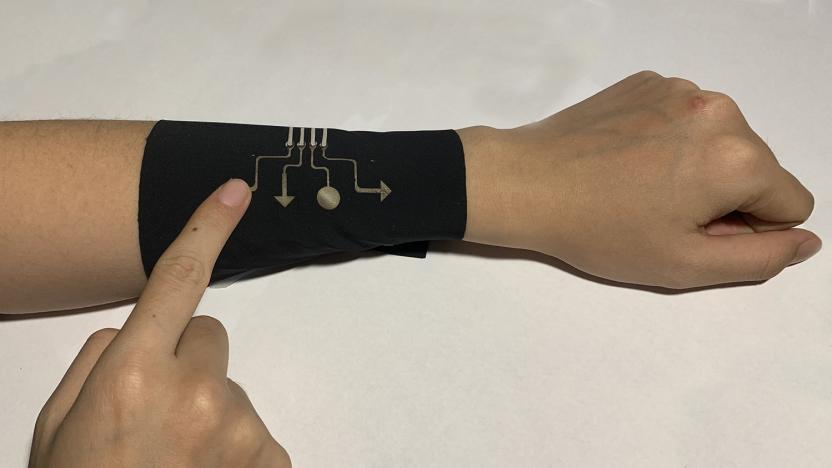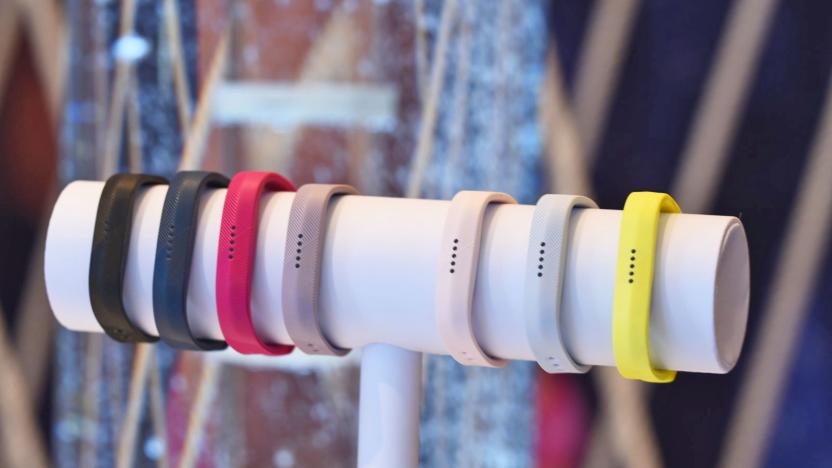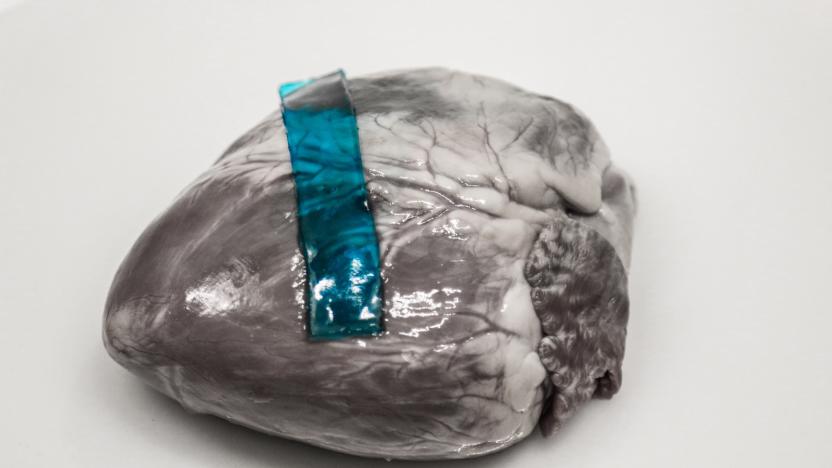biomedical
Latest

Researchers grew a mini human heart to study fetal heart development
A team of scientists have grown a miniature human heart to better understand fetal heart development.

Researchers control a game of Tetris using a breathable wearable sleeve
Researchers created an ultrathin, stretchable, breathable electronic material for more comfortable wearables.

Self-charging pacemakers are powered by patients' heartbeats
Millions of people around the world depend on pacemakers, defibrillators and other life-saving implantable devices. The problem is, their batteries need to be replaced every five to ten years, requiring surgery that's not only expensive, but carries the risk of complications and infections. Now, though, a team of scientists are developing an implantable biomedical device that can be recharged with energy from cardiac activity.

3D-printed bacteria ink could be used to treat burns
In a new study published today in Science Advances, researchers present a 3D-printable ink that contains bacteria and they say that depending on what species of bacteria it holds, the ink stands to have a number of useful applications. "Printing using bacteria-containing hydrogels has enormous potential, as there is such a wide range of useful bacteria out there," Patrick Rühs, an author of the study, said in a statement.

Fitbit chosen for long-term US health study
Fitbit has been tussling with Apple and Xiaomi when it comes to market share in the wearables field and quarter to quarter, each has held the top spot at one point or another over the past year. But it turns out Fitbit is the favorite wearable producer in the medical research world and because of that, its products were just chosen by the National Institutes of Health (NIH) to play a role in its long-term All of Us research program.

Researchers make biomedical adhesive inspired by slug slime
Being able to repair internal tissue with adhesives would be incredibly useful in the medical world. As of now, those kinds of repairs are limited to sutures and staples, which are far from ideal and while external wounds can be closed with certain glues, they don't work for internal surfaces. First, the insides of our bodies are really wet -- not great for glues. And many of the strongest adhesives we have are either toxic to cells or too stiff to work on squishy, moving organs. But researchers have created a new class of adhesives that get around all of these problems, and they were inspired by slug slime.

Artificial iris responds to light like real eyes
The human iris does its job of adjusting your pupil size to meter the amount of light hitting the retina behind without you having to actively think about it. And while a camera's aperture is designed to work the same way as a biological iris, it's anything but automatic. Even point-and-shoots rely on complicated control mechanisms to keep your shots from becoming overexposed. But a new "artificial iris" developed at Tampere University of Technology in Finland can autonomously adjust itself based on how bright the scene is.

ICYMI: End forgetfulness with the e-version of a Post-It.
try{document.getElementById("aol-cms-player-1").style.display="none";}catch(e){}Today on In Case You Missed It: A German researcher developed a digital Post-It note that never dies as long as the small solar panel gets sunlight. They can be stuck just about anywhere. Meanwhile, EPFL scientists are creating soft robots to act as artificial muscles. So far they see the most success with a belt to help support the weight of people who've had strokes. Finally, the stop motion video of a Death Star being created is a fun watch, as is the disturbing promo video for Google's newest app, SprayScapes. As always, please share any interesting tech or science videos you find by using the #ICYMI hashtag on Twitter for @mskerryd.

Researchers develop first artificial muscle that can 'remember' movement
We've seen ultrastrong artificial muscles and a freaky rubbery motor using the technology, but researchers at the University of Cambridge are taking things to another level. They've developed the first such "muscle" (which is actually made out of smooth plastic) that can learn and remember movement. It's similar to the way muscle memory works in nature -- if you spend time learning how to play the piano, eventually you'll be able to recall complex finger movements without much thought. The new material, dubbed polymeric electro-mechanical memory (EMM), can also recall movement without any prodding. It's also a step up from existing technology, which can only remember shapes. The discovery may eventually lead to more life-like implementations of artificial muscles for bio-medical uses, robotics (like the artificial fish above), and a slew of other fields. In particular, the researchers found that it could manipulated with low-voltage inputs, which bodes well for its use as something we can put in our bodies. [Illustration: Stoyan Smoukov]

Researchers create spinal cord connectors from human stem cells, heralding breakthrough
It's taken many years and more than a bit of brainpower, but researchers at the University of Central Florida have finally found a way to create neuromuscular connectors between muscle and spinal cord cells, using only stem cells. Led by bioengineer James Hickman, the team pulled off the feat with help from Brown University Professor Emeritus Herman Vandenburgh, who collected muscle stem cell samples from adult volunteers. After close examination, they then discovered that under the right conditions, these samples could be combined with spinal cord cells to form connectors, or neuromuscular junctions, which the brain uses to control the body's muscles. UCF's engineers say the technique, described in the December issue of the journal Biomaterials, marks a major breakthrough for the development of "human-on-a-chip" models -- systems that simulate organ functions and have the potential to drastically accelerate medical research and drug development. These junctions could also pay dividends for research on Lou Gehrig's disease or spinal cord injuries, though it remains unclear whether we can expect to see these benefits anytime soon.

Piezoelectric system turns your balmy breath into pungent power
Researchers at the University of Wisconsin-Madison have come up with a way to produce electricity from just about the most renewable source known to man -- his own breath. It's all thanks to a plastic microbelt developed by engineers Xudong Wang, Chengliang Sun and Jian Shi. Made of a material known as polyvinylidene fluoride (PVDF), this belt produces an electric charge whenever low-speed airflow passes over it and causes it to vibrate -- a result of that vaunted piezoelectric effect. Eventually, Wang and his team were able to tinker with their system to the point where it could produce enough current to charge small electronic devices. "The airflow of normal human respiration is typically below about two meters per second," Wang explained. "We calculated that if we could make this material thin enough, small vibrations could produce a microwatt of electrical energy that could be useful for sensors or other devices implanted in the face." The researchers say their technology could be used to power smaller biomedical devices like blood monitors and pacemaker batteries, which typically don't demand vast amounts of energy. No word yet on when this system could make its way to the mainstream, but we'll be waiting with bated breath.

AMO Arm pneumatic prosthetic does mind-control on the cheap
We're no strangers to amputees moving stuff with their minds -- for that matter, a thought-controlled prosthetic isn't really new to us, either -- but the pneumatic arm you see here isn't like other intelligent limbs. Unlike most mind-operated prosthesis, the Artificial Muscle-Operated (AMO) Arm doesn't require invasive surgery, and according to its inventors, it costs a quarter of the price to make. Here's how the thing works: the host human wears a headset that sends brain signals to a chip in the arm that then matches those signals to a database of related actions, triggering a series of pneumatic pumps and valves to move the limb. Thus, if the wearer thinks 'up,' the arm moves up. The AMO Arm's creators, a pair of undergraduate biomed students, say that not only is their invention a steal to produce, but it also takes just minutes to acclimate to, which has us wondering, do you have to be missing an arm to get a hold of one of these things? You know, we can always use an extra hand. Full PR after the break.

NC State gurus find 'Goldilocks' of DNA self-assembly, look to improve drug-delivery vehicles
We're guessing that most Wolfpackers in the greater Raleigh area are in full-on tailgate mode right now, but aside from laying a beating on the Seminoles this evening, NC State faithful are also trumpeting a new DNA discovery that could one day make it easy to get vital drugs to hard-to-reach places within you. Researchers from the university have purportedly discovered the 'Goldilocks' of DNA self-assembly, which holds promise for technologies ranging from drug delivery to molecular sensors. The concept, known as DNA-assisted self-assembly, has been vastly improved by using "computer simulations of DNA strands to identify the optimal length of a DNA strand for self-assembly." You see, perfection occurs when strands aren't long enough to intertwine with each other, yet not short enough to simply fold over on each other. We know, it's a lot to wrap your brain around with half a hot dog shoved in your mouth, but hit the video after the break for a... shall we say, more visual explanation.

Christie creates baffling 3D HD CAVE 'visual environment,' or your average Halo display in 2020
Whenever the word "Christie" is involved, you can generally count on two things: 1) you can't afford it and 2) you'll want to afford it. The high-end projection company is at it once again, this time installing a truly insane visual environment at Weill Cornell Medical College in New York. The 3D HD CAVE is intended to help researchers find breakthroughs in biomedical studies, and while CAVE itself has been around for years, this particular version easily trumps prior iterations. For starters, it relies on eight Christie Mirage 3-chip DLP projectors, all of which have active stereo capabilities and can deliver a native resolution of 1,920 x 1,920. Yeah, that's 3.68 megapixels per wall. The idea here is to provide mad scientists with a ridiculous amount of pixel density in an immersive world, but all we can think about is hooking Kinect and the next installment of Bungie's famed franchise up to this thing. Can we get an "amen?"

Ultraportable ultrasound machine paves the way for wacky ultrasound pranks
It might look more like a Radio Shack project kit than a serious piece of medical equipment, but George K. Lewis -- a third year biomedical engineering PhD student -- has developed a pocket-sized ultrasound device that can be manufactured for about $100. Typically, a biomedical ultrasound unit can weigh 30 pounds and cost upwards of $20,000. The developer has high hopes for the device -- not only will an ultraportable ultrasound bring the technology to places where it might have been impractical before (such as combat units in the field and remote populations), hopefully the inexpensive contraption will spur innovative new uses for the device. So, what's stranger -- scoping your unborn child with a homebrew ultrasound, or using an incubator that once lived as a Toyota 4Runner? That's a tough call...[Via Inventor Spot]








